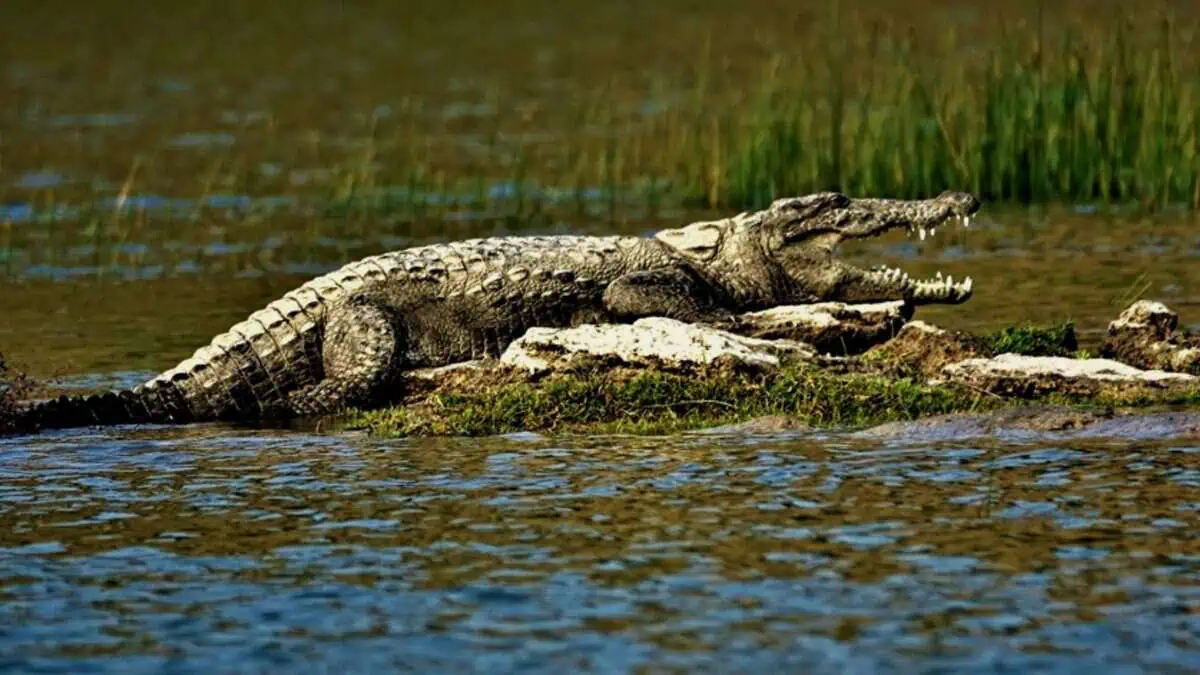
This April, as India quietly celebrated five decades of dedicated crocodile conservation, it’s a fitting moment to reflect on what it truly takes to save the last living dinosaurs of our land. These ancient reptiles, so misunderstood, yet so critical to our river ecosystems, have weathered the test of time. But in today’s rapidly changing landscape, they rely more than ever on our understanding, compassion, and resolve.
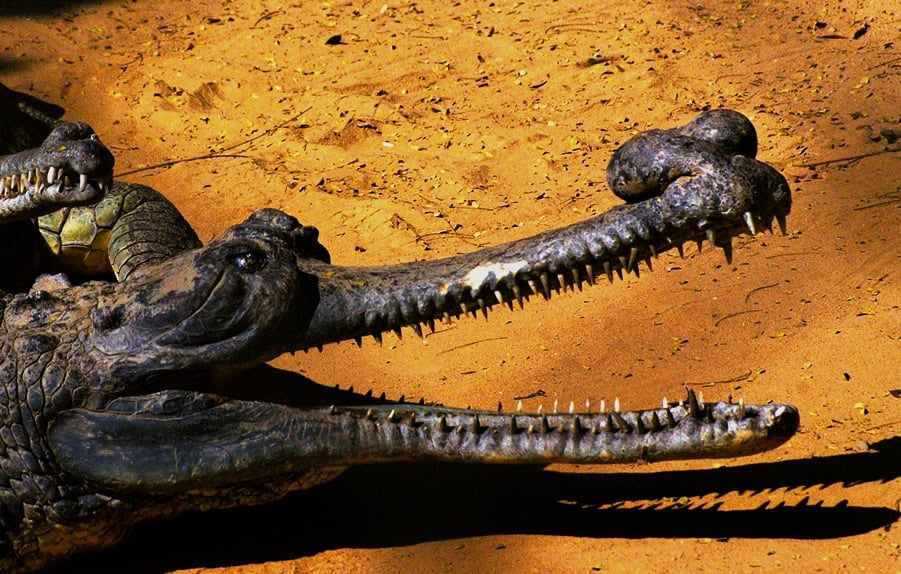
Photograph by N. Shiva Kumar
My journey with crocodiles began not in the pages of biology textbook but in the serene wilds of the Manjira Wildlife Sanctuary, some 70 km from Hyderabad. It was the early 1980s, and I was on a birdwatching trip with the erstwhile Birdwatching Society of Andhra Pradesh [BSAP]. We journeyed through rolling scrublands and under the shade of ancient roadside trees, accompanied by forest officials who introduced us to the delicate harmony of this sanctuary, a haven not just for birds, but also for crocodiles.
Yes, crocodiles. Specifically, the Mugger crocodile, a freshwater species that had once teetered on the brink of extinction in Telangana. The sanctuary, spread along the Manjira River, a tributary of the Godavari, became a designated refuge for these reptiles. In the late 1970s, thanks to the foresight of conservationists and government officials, the area was declared a wildlife sanctuary, laying the groundwork for an ambitious programme to revive Mugger populations.
Breeding programme
At the heart of this conservation effort was a carefully orchestrated breeding and rearing programme. Mugger nests, carefully collected from the wild, were incubated under simulated conditions at the Nehru Zoological Park in Hyderabad. As a young lad, just out of college in the 1980s, I was fortunate to witness this clutch of eggs hatch into tiny crocodiles, thanks to the crocodile experts. Hatchlings were raised in protected environments until they reached about 1.2 meters in length, considered large enough to survive predation pressures. These juveniles were then released into secure aquatic habitats like Manjira and Ethipothala Falls located on the Chandravanka River, which is a tributary of the Krishna River.
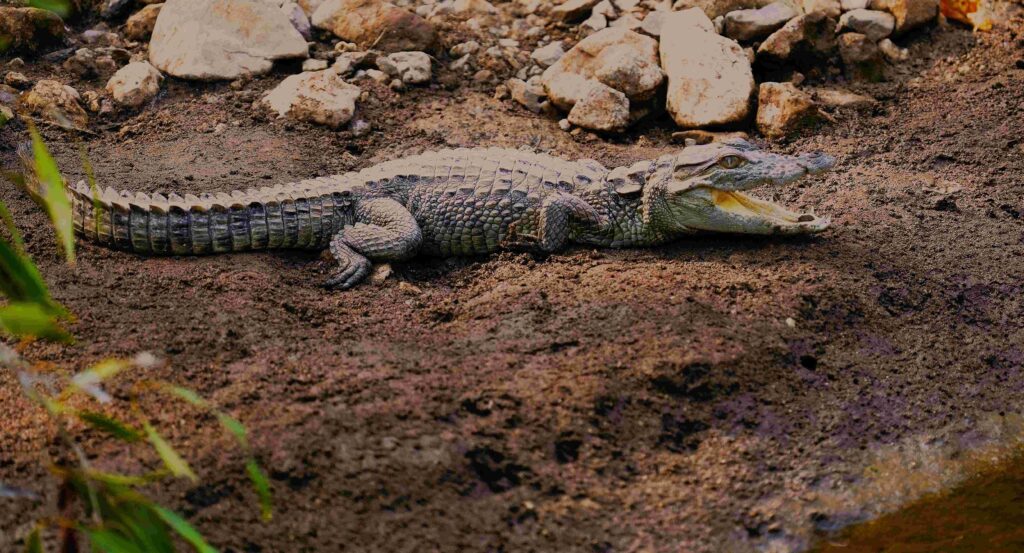
Photograph by N. Shiva Kumar
During the mid-1980s, under the watchful eye of experts such as Dr. B.C. Choudhury and Dr. V. Vijay Kumar from the Central Crocodile Breeding and Management Training Institute, alongside A.P. Forest Department officer K. Vara Prasad, released Muggers were closely monitored for up to four years. Dr. Vijay even earned his Ph.D. on Mugger crocodile ecology based on this groundbreaking study on the breeding and brooding of crocodiles.
However, despite local estimates suggesting a population of 300–400 Muggers, no formal scientific survey has confirmed these numbers. Now, retired Professor Choudhury advocates for a comprehensive assessment using spotlight counts and other modern techniques, not just to understand the population better, but also to avoid potential human-crocodile conflicts and to determine the sanctuary’s true carrying capacity.
Conservation beyond numbers
There is also an urgent call to rethink conservation beyond just numbers. Community-based eco-tourism, centred around crocodiles and bird watching, could offer both economic incentives and grassroots support. Trained local youth could become guardians of the sanctuary while benefiting from tourism, making conservation a shared goal rather than an isolated mandate.
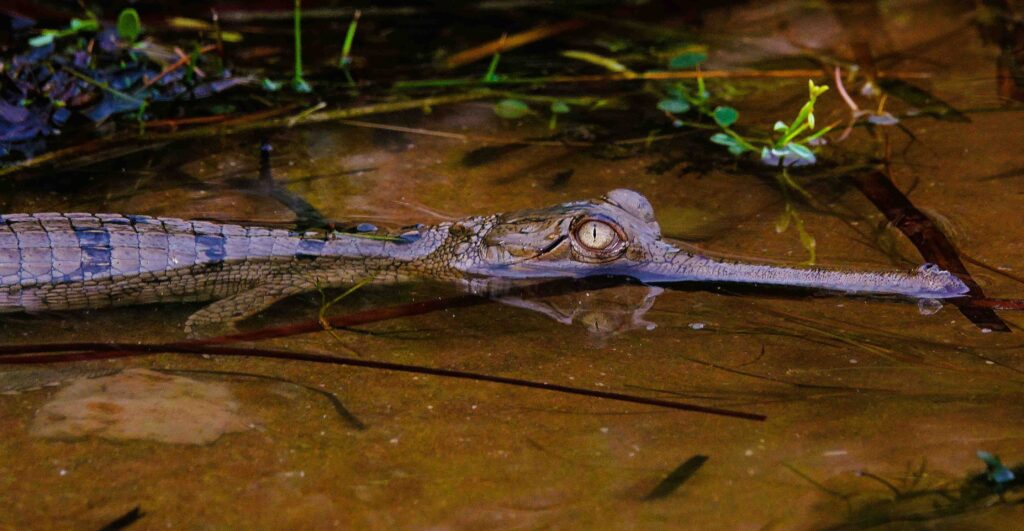
Photograph by N. Shiva Kumar
Why do crocodiles matter so much? Because they are survivors in the truest sense. In India, crocodiles have long held a dual identity, both sacred and feared. Mythology worships the crocodile, or makara, as the Mount of Varuna, the rain god, and the emblem of Kamadeva, the god of love. Ancient forts had crocodile-filled moats for defence like the Golconda Fort or the Bidar Fort. Yet the same creature has been vilified, fishermen once hunted them for sport or in fear of fish harvesting competition.
Beginning of the crisis
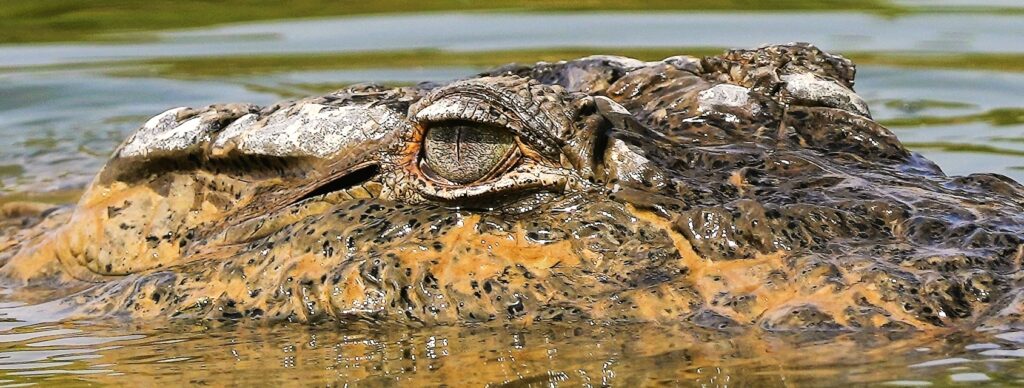
Photograph by N. Shiva Kumar
By the 1970s, overhunting, pollution, and habitat destruction had pushed all three Indian crocodilian species, the Mugger, the Saltwater Crocodile, and the Gharial, to the edge of extinction. A nationwide conservation project, launched in 1975 with UN support, aimed to reverse this trajectory. Thousands of Gharials were bred and released into sanctuaries. The Gharial, with its long snout and gentle demeanour, remained the most endangered, despite being harmless to humans.
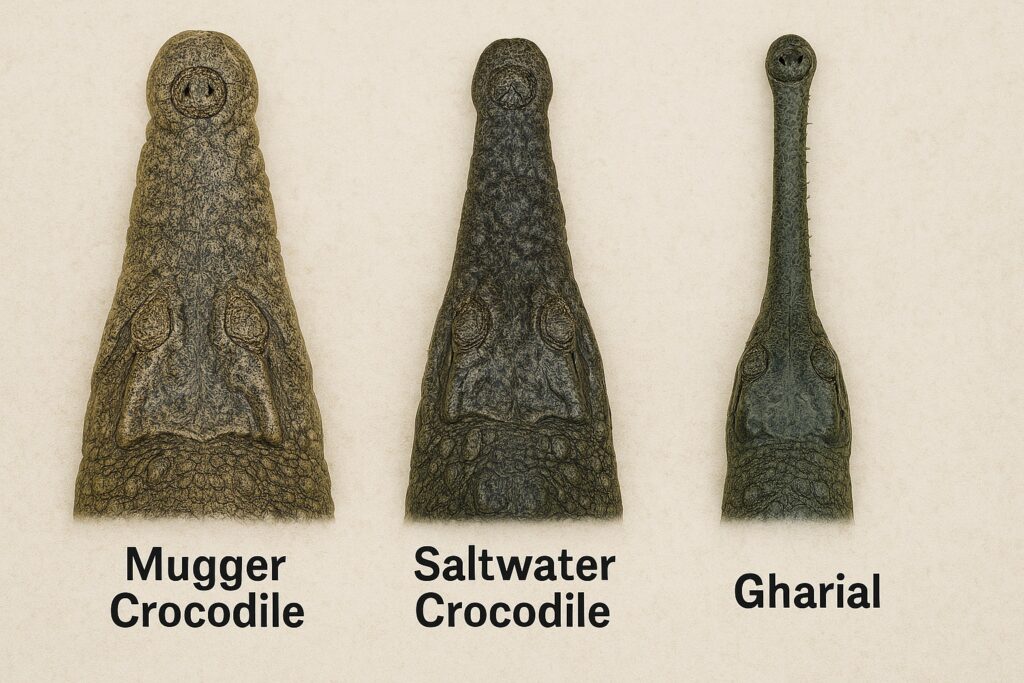
Photograph by N. Shiva Kumar
In recent years, as national attention veers toward charismatic species like Tigers and Elephants, crocodiles have once again slipped into the shadows. Human-crocodile conflicts, especially in rural areas, have led to renewed hostility. The narrative needs urgent course correction. Crocodiles are not villains—they are vital links in the ecological chain. They clean river systems by feeding on the weak and the dead. Their nesting activities aerate riverbanks. They are indicators of healthy aquatic and ecological ecosystems.
As erstwhile Andhra Pradesh, now Telangana reflects on five decades of crocodile conservation, Manjira stands as both a success story and a reminder of the road ahead. What began with a handful of hatchlings and a dream has blossomed into a living legacy. But for that legacy to endure, we must reinvest, reinvent, and revive to relay in science, in community, and above all, in empathy.
Let us not forget the Crocodiles, India’s most ancient aquatic sentinel. In protecting them, we protect something far greater than a species. We safeguard the soul of our rivers and the memory of Earth’s earliest chapters.




